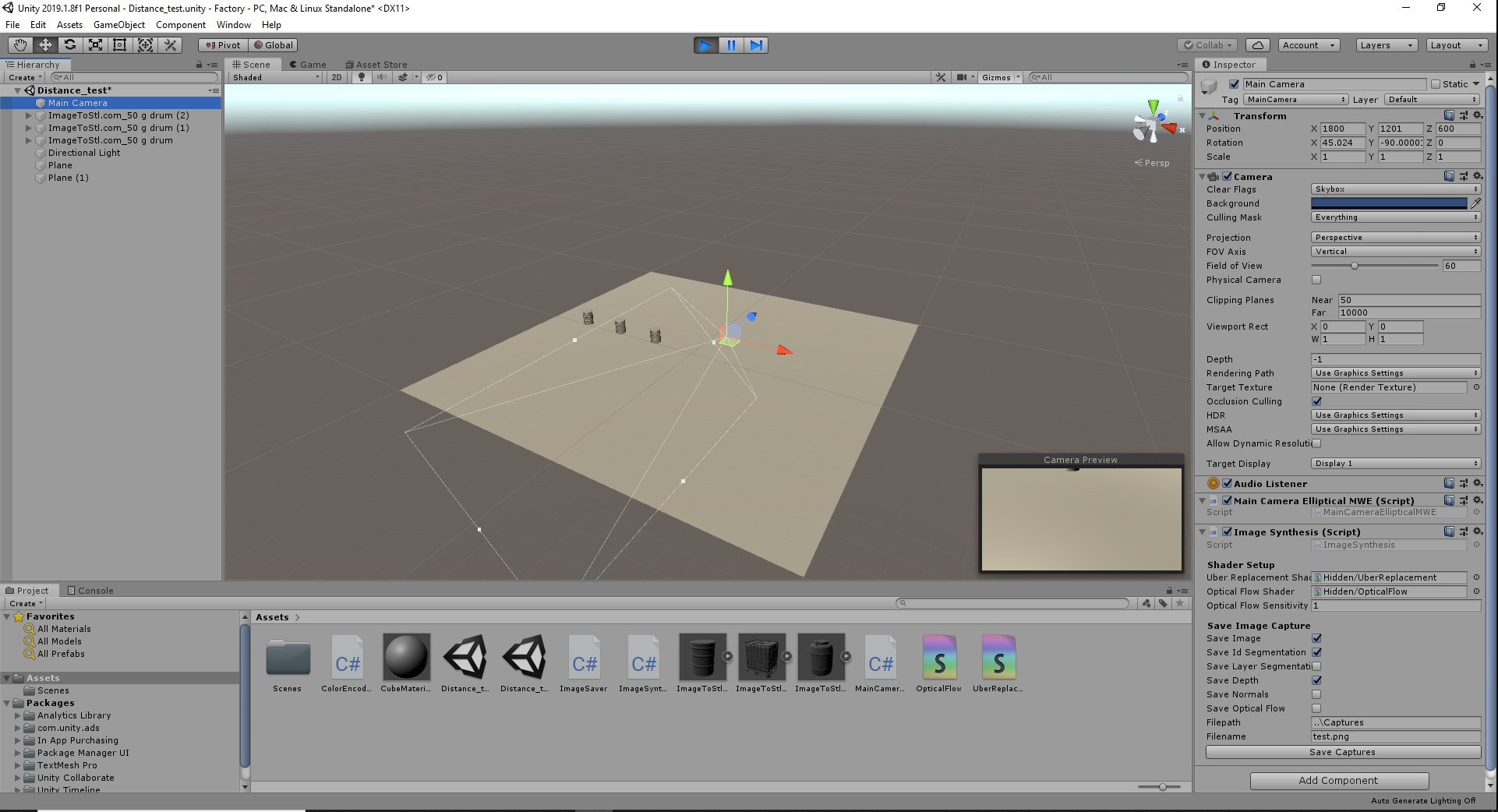Created
November 14, 2019 01:28
-
-
Save xepherys/1a22ed93e6c6efde61f1667f45a80a72 to your computer and use it in GitHub Desktop.
Unity camera script for tracking around an elliptical or circular path
This file contains bidirectional Unicode text that may be interpreted or compiled differently than what appears below. To review, open the file in an editor that reveals hidden Unicode characters.
Learn more about bidirectional Unicode characters
| using System; | |
| using UnityEngine; | |
| /// <summary> | |
| /// The MainCameraEllipticalMWE class provides motion of the camera in an ellipse (or a circle) | |
| /// given sizeX and sizeZ where one is the major axis and the other the minor axis. Which is | |
| /// which isn't important, and they can be equal (x == z) if the camera is to track in a circle. | |
| /// | |
| /// The size values assume a 2D surface where x=0, z=0 is at the bottom left and built in both x+ | |
| /// and z+ directions. | |
| /// </summary> | |
| public class MainCameraEllipticalMWE : MonoBehaviour | |
| { | |
| // sizeX and sizeZ are provided here to provide a reference point. In use, my version | |
| // of this script omits these values and gets values from a manager object fed into | |
| // the FixCamera() method where xAmplitude and zAmplitude are set. | |
| int sizeX = 12; | |
| int sizeZ = 3; | |
| Vector3 center; | |
| float height; | |
| float fudgeFactor = 1.0f; | |
| float phase = 0f; | |
| float xAmplitude = 0f; | |
| float zAmplitude = 0f; | |
| float x; | |
| float z; | |
| void Awake() | |
| { | |
| this.FixCamera(sizeX, sizeZ); | |
| } | |
| /// <summary> | |
| /// On Update(), if the appropriate key is pressed, rotate the camera around the center | |
| /// of the area defined. The camera will tilt as appropriate to maintain the same center | |
| /// point of view. The greater the difference between the major and minor axes, the | |
| /// greater the difference of speed as the camera traverses the outsides of the major axis. | |
| /// </summary> | |
| void Update() | |
| { | |
| if (Input.GetKey(KeyCode.A)) | |
| { | |
| // Move left | |
| phase -= 0.01f; | |
| x = xAmplitude * Mathf.Cos(phase); | |
| z = zAmplitude * Mathf.Sin(phase); | |
| transform.localPosition = new Vector3(x, height, z) + center; | |
| this.GetComponent<Camera>().transform.LookAt(center); | |
| } | |
| else if (Input.GetKey(KeyCode.F)) | |
| { | |
| // Move right | |
| phase += 0.01f; | |
| x = xAmplitude * Mathf.Cos(phase); | |
| z = zAmplitude * Mathf.Sin(phase); | |
| transform.localPosition = new Vector3(x, height, z) + center; | |
| this.GetComponent<Camera>().transform.LookAt(center); | |
| } | |
| } | |
| /// <summary> | |
| /// FixCamera() provides the initial camera position, sets the camera height, and | |
| /// resolves the center position based on the horizontal and vertical sizes of | |
| /// the screen area. | |
| /// </summary> | |
| /// <param name="horizontalSize"></param> | |
| /// <param name="verticalSize"></param> | |
| public void FixCamera(int horizontalSize, int verticalSize) | |
| { | |
| xAmplitude = horizontalSize; | |
| zAmplitude = verticalSize; | |
| height = Math.Max(horizontalSize, verticalSize) + fudgeFactor; | |
| center = new Vector3((float)horizontalSize / 2, 0, (float)verticalSize / 2); | |
| float x = xAmplitude * Mathf.Cos(phase); | |
| float z = zAmplitude * Mathf.Sin(phase); | |
| transform.localPosition = new Vector3(x, height, z) + center; | |
| this.GetComponent<Camera>().transform.LookAt(center); | |
| } | |
| } |
Sign up for free
to join this conversation on GitHub.
Already have an account?
Sign in to comment
Thanks for sharing the code.
I have one question related to camera position:
How to see the "horizontalSize" and "verticalSize" of the screen area in the Unity3D (code line 68, 69)?
Is Width and Height in the Canvas Slider?
Is the camera starting position dictated by Position under Transform at Unity3D?
Here is my current scene screenshot:
